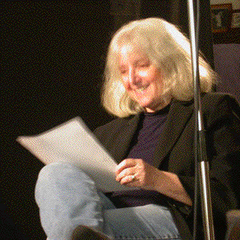Wednesday, January 23, 2008
What is Beauty? Is it really the most "average?"
Here's a link to go play with this idea yourself, I found it quite intriguing.
http://www.faceresearch.org/demos/average
Tuesday, January 22, 2008
From Zen Habits: 7 Powerful Steps to Overcoming Resistance and Actually Getting Stuff Done
Taken into the world of how to get things done, the Zen Habits post is certainly not unfriendly like the traditional psychologist's concept of resistance. But it too leaves out the underlying reason for stopping oneself from moving forward. I think as in the case of psychological problems, the s0-called resistance represents an internal inhibition, often some form of survivor guilt, or fearing that if you become highly active, efficient and successful, you risk making someone close to you feel inadequate simply by comparison. So you stop yourself from moving ahead effectively, the way you really want to. The source of inhibition may lie elsewhere, but whatever it is, it might be worth while to think about your resistance to getting things done as a kind of inhibition.
This said, here's the post, its well worth reading (I still don't exactly know the etiquette here, about putting someone else's blog inside mine. I think as long as I put the link, it may be ok. If not, forgive the breach of good behavior). In any case, getting into Zen Habits http://zenhabits.net/ on a regular basis is well worth while.
http://zenhabits.net/2008/01/7-powerful-steps-to-overcoming-resistance-and-actually-getting-stuff-done/#more-620
7 Powerful Steps to Overcoming Resistance and Actually Getting Stuff Done
There are a slew of popular books and systems, from favorites of mine such as Getting Things Done to the 7 Habits of Highly Effective People
to the Now Habit
and more, all designed to get us more productive and effective.
But getting things done is really about one thing, and one thing only: overcoming the resistance to doing what we need to do.
OK, I would add a couple more steps to that, to ensure that we’re managing our tasks correctly:
1. Have all our projects and tasks stored in an external system (out of our heads), such as a to-do list or lists.
2. Pick the tasks and projects that are most important to work on.
3. Overcome the resistance to actually doing those important tasks.
And I would submit it’s the last step that’s the most important (although I wouldn’t ignore the other two). Unfortunately, because we’re not very good at overcoming resistance, we procrastinate on this third step by fiddling with the external system — the tools we use to organize our tasks, coming up with new and better systems, tweaking them until they’re near perfect, and so on.
That’s Resistance.
As Stephen Pressfield writes in his excellent book on this topic, The War of Art:
“There’s a secret that real writers know that wannabe writers don’t, and the secret is this: It’s not the writing part that’s hard. What’s hard is sitting down to write.
What’s keeping us from sitting down is Resistance.”
The War of Art is all about Resistance, not only for writers and other artists, but for anyone trying to pursue their dreams or become what they’re meant to be. I highly recommend it. This, of course, is also a topic that is central to Zen Habits: overcoming Resistance to create new and better habits, to find happiness and simplicity, to do what you need to do and love to do.
I fight Resistance every single day, and I thought you might be interested in some of the ways I fight and beat Resistance, daily.
1. Become aware. The problem usually is that we don’t think about Resistance. We don’t understand it or even realize it’s there most of the time. We just think, “Oh, I better straighten out my desk … or get my to-do lists in order” or we get distracted by something on the web, or we feel that we have to check our email, or we’re just going to watch this one TV show, or any of a limitless amount of distractions.
Combat this by realizing that you are facing Resistance. Once you become aware of it, you can fight it, and beat it. It can be difficult to become more aware, but the key is to focus on it for a couple of days. Print out the words “Defeat Resistance” and put it somewhere visible as you work. That will help remind you to be aware of Resistance. Every time you do something that isn’t the most important thing you could be doing right now, be aware of what you’re doing.
2. Become a pro. This is the main technique that Pressfield outlines in The War of Art: combating Resistance by turning pro. The professional, unlike the amateur, comes to work ready to work. He’s doing it for a living (and loves what he does) and knows that as long as he shows up and starts working, the rest will come. Approach the work like a pro, and you’ll get the work done.
3. Be very clear, and focus. Before you start the day, be very clear about what you want to accomplish. You won’t be able to finish 10 major projects, but maybe you can finish one important project, or at least move it along to a certain point. Set three Most Important Tasks you want to accomplish today. Once you have those things defined, you’ve got to focus on them to the exclusion of all else (at least, during your prime work time). Do them first. Focus, finish, then move on to the smaller tasks you need to complete today. If you find yourself being lured to do something that’s not on that short list of three things, bring yourself back and focus.
4. Clear away distractions. Don’t spend a lot of time on this, because eliminating distractions can be a distraction itself. Instead, take one minute: close your email program and IM program and turn off all notifications. Shut down the Internet if at all possible. Close all programs except the one you need to do the important task in front of you. Clear your desk quickly (stuff everything in a drawer or something — you can organize it later) and turn off the phones if possible. Put on headphones or alert your coworkers (or family, if you’re at home) that you’re not to be disturbed for the next hour (or however long you plan to work on this task). Then get to work.
5. Have a set time and place. Make your first important task a daily appointment. For me, that’s writing. I always start the day with a writing task (such as writing this post, for example). For you, that might be different. Have a set start time, and possibly a set ending time — you’ll have to see what works for you, but the important thing is the set starting time. And when that time comes, you have to start. No exceptions.
6. Know your motivation. Why are you doing this? Why is this task important? What is it working towards? And how important is that end goal to you? Why is it important? You need to know these things to build up the motivation to overcome Resistance.
7. Just start. In the end, all the tips in the world won’t make as much a difference as this simple (and timeless) instruction. Just sit down and start. Feel Resistance to doing that? There’s no way to overcome it than to just start. Reading more about Resistance won’t help. Going to an online Procrastinator’s Forum won’t help. Working on your to-do lists won’t help. Only doing actually helps. And the only way to do something is to just start.
So how do you start, when you feel resistance? You just start. Feeling the need to do something else? Stop yourself from getting distracted. Remind yourself what you need to be doing, and why. Sit down and the set time and place. And just start.
For me, that means opening up a blank text file and writing the title of whatever I’m writing. Then I start brainstorming and outlining ideas. This gets me over the initial Resistance. And once I’ve started on that, I can usually get into the flow. But the important thing is to get started.
So stop reading this. And just start!
Update: See another great article on this topic just published over at LifeDev.net: Keeping Focus While Beating Back Distractions.
Thursday, January 17, 2008
It's All in the Eyes
That said, a few days ago I read about a study so compelling that I feel I have to post it here. In a study involving rating the intensity of emotion expression on faces, the subjects --people who were to be the "raters"-- were shown photographs of faces and asked to rate the intensity of the emotion shown on the face. The emotions were common ones (at least for experiments), like happiness, anger and sadness. Then the experimenters manipulated nothing but the pupil of the eye, that was visible in the photograph. Now how big or how small one's pupils are are NOT under our conscious control. Meaning no matter how much I want to fake this or that emotion, I couldn't use the size of my pupils to do it. I might be able to fake a smile, but not pupil size.
Three photographs of the same face were shown. Each of the three faces differed, only by pupil size. In one it was big, in one medium, and in one small. Then the raters were asked to estimate the emotion and intensity of the emotion. In sadness (and only in sadness) the raters significantly rated the photo with the face with smaller pupils as more intensly sad.
Additionally the experimenters got a general empathy score for each rather, using a standard empathy measure. They found that those who were more empathic in general, were more often rating the smaller pupil as sadder, meaning they were more tuned in to this signal of intensity than other raters.
This study got my head spinning. For many years, whenever questioned, Paul Ekman, a leading emotion researcher, had insisted that guilt was not a pure emotion, because there was no, clear and cross cultural muscular display of guilt, that would be systematically identified by raters. This he took to mean that guilt was a composite of different emotions. This didn't make sense to me, but who was I to argue with a major authority. Lets face it, I argued anyway, but had no evidence for my own conclusion, that guilt is indeed a pure and universal emotion. Upon reading this article this week, the light dawned --guilt might be conveyed in the eyes, by pupil size or some other special feature of which we are entirely unaware, as experiencers, or as raters, those responding to the gestures of emotions. And what else is communicated by our pupils, over which we have no control. We know that people make instantaneous snap decisions about people they meet for the first time. How does that happen? We can read book after book telling us how to make a good first impression, but something is always missing. Of course it is. Our pupils change without conscious awareness, and we read faces, also without conscious awareness.
It's all in the eyes.
Harrison, N.A., Wilson, C. E., & Critchely, H.D. (2007). Processing of Observed Pupil Size Modulates Perception of Sadness and Predicts Empathy. Emotion, vol 7, #4, 724-729.

